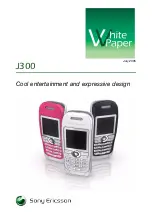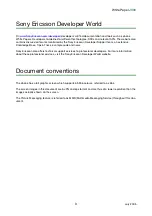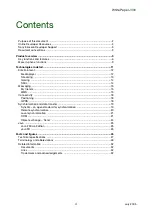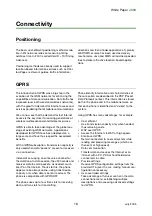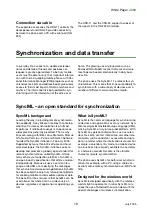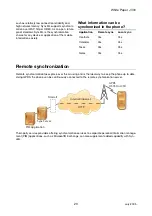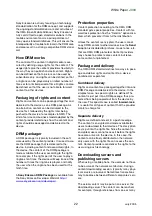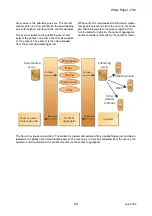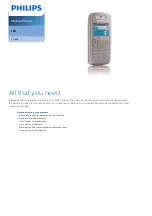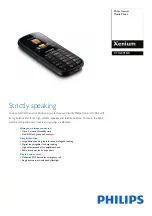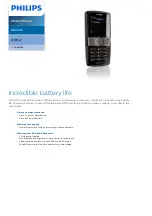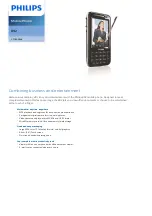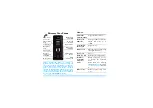
White Paper
J300
9
July 2005
More in-phone functions
Navigation key
The 4-direc select key is
designed to easily navigate the
menu system. In a menu, it can be
gently pressed to select a feature.
It can also be used as a
joystick
with games.
Improved User Interface (UI)
Selection keys and the key assignment give a very
efficient interaction design with full flexibility to
handle all the new features and applications. Sony
Ericsson has focused on user-centred design and
extensive usability testing to solidify the new UI
paradigm. This ensures visibility in actions and sys-
tem status and consistency between applications
and similar actions. The high-resolution colour
screen is easily managed with the navigational key.
Setup wizard
The setup wizard makes it possible for the user to
quickly and easily prepare the phone for use.
At the first start-up, the setup wizard starts and
helps the user with some core settings whilst giving
hints about the functionality of some important
keys: back and clear.
The setup wizard includes:
•
setting the language
•
setting time and time format
•
setting date and date format
•
the possibility to import contacts from a SIM
card
•
hints about the Back and C keys
Polyphonic sounds - 40 voices
Polyphonic sounds and the MIDI
format has revolutionized the
sound quality of ringtones in
mobile phones. With this format,
the user can play, compose, edit and send
melodies by using the MusicDJ™. The built-in
sound synthesizer uses wave tables, real
instrument sounds, with 40 voices polyphony.
The new composer has an improved graphical user
interface to simplify melody handling. All new and
edited melodies are stored in MIDI format.
File management
There is a file manager, similar to that, found on
many computers. In the file manager, the user has
an overview of the contents of the phone as well as
how much memory has been used be each func-
tion. Folders can be created, renamed, or deleted
and files can be moved between them.
GPRS
(General Packet Radio Service)
GPRS uses Internet-style packet-based technol-
ogy. GPRS gives the benefits of a permanently
available connection to the mobile Internet, but
only uses the radio link for the length of time it
takes to transfer data. GPRS offers the user the
speed needed for satisfactory mobile Internet usa-
bility. This phone supports GPRS 4+2.
WAP 2.0 supporting XHTML™
The WAP browser supports the markup languages
of WAP 2.0 – XHTML Mobile and XHTML Basic.
These two subsets of the Web standard XHTML are
supported by all major Web browsers. An XHTML
page can be viewed in both the WAP browser and
in any standard Web browser. All of the basic
XHTML features are supported, including text,
images, links, check boxes, radio buttons, text
areas, headings, horizontal rules and lists.
In addition to XHTML, the WAP browser supports
WML. The user can navigate between WML and
XHTML pages. WAP 2.0 also supports cookies,
often used by Web sites to store site-specific infor-
mation in the browser between visits to the site.
Cookies are often used by e-commerce sites (in
shopping carts and wish lists for example), and to
save the user from entering the same information
more than once.
Cascading style sheets (CSS)
Before style sheets were introduced on the Web,
developers had little control over the presentation
of their Web pages. An XHTML document specifies

